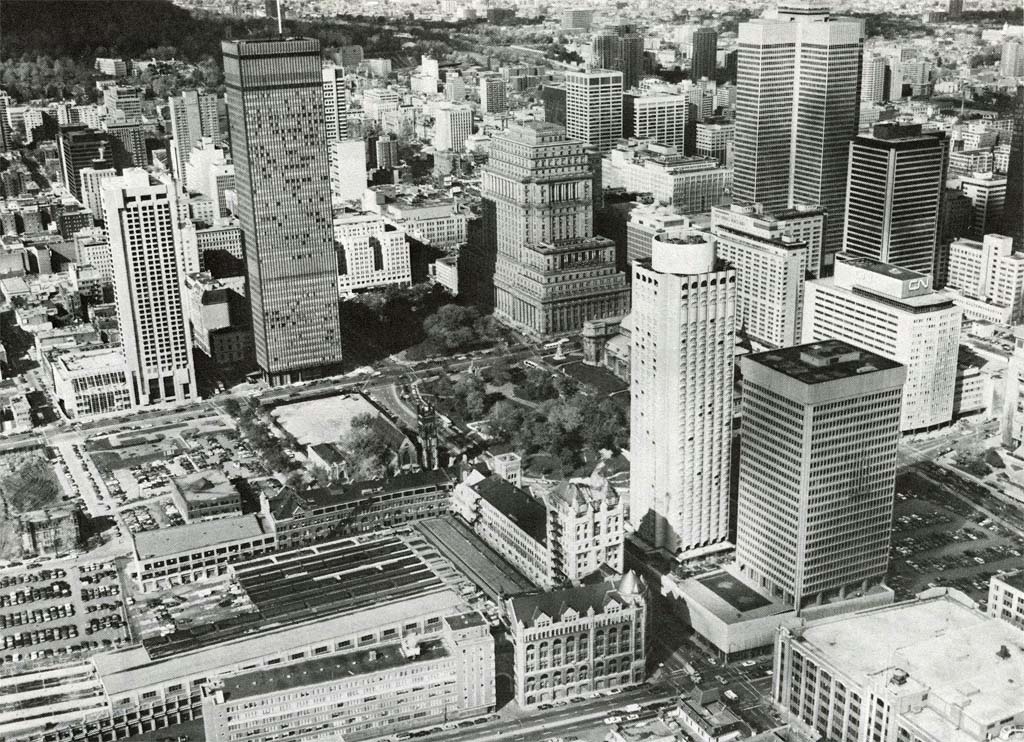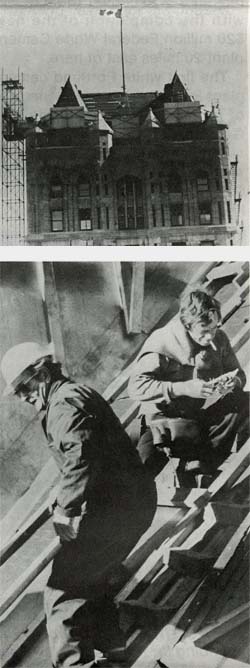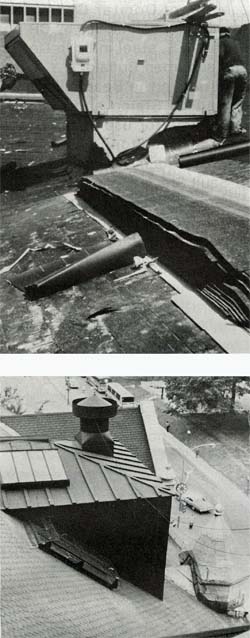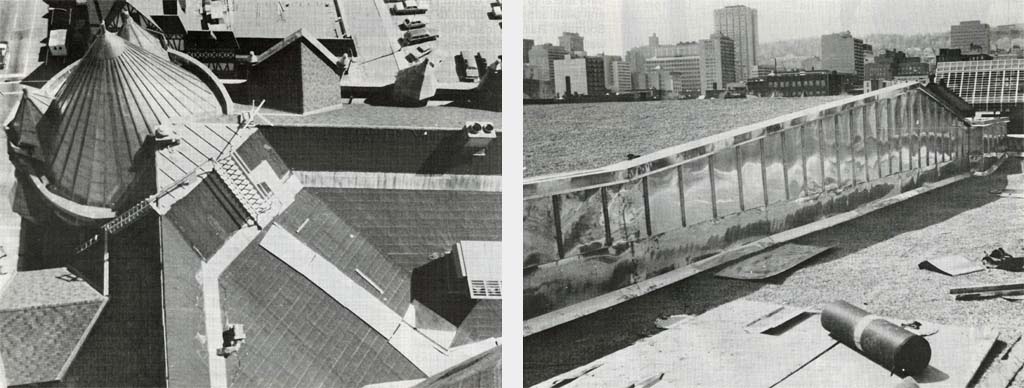
Number 6
May 14, 1980
Towering Two-Year Mission


The three-year repair and restoration program for Windsor Station headquarters is being topped off by a new roof. A two-year project, this work is to be completed by October or November. The entire program is under the direction of Gordon Gayda, Canadian Pacific's director, corporate premises.
The new roof is actually a restoration of the original 1889 slate and copper one because the building has been declared an historic site and can not be changed. However, improvements have been made in the installation to prevent seepage and to make the roof last longer.
The copper is good for at least 50 years and the slate has an even longer life. Insulation was added to improve the building and save energy.
To date, 49,700 pounds of copper have been used, 6,000 pounds on the tower alone. Other materials used on various sections of roof are slate, asphalt, and gravel. All the old roofing was removed, right down to the cement slab and wood base.
The work is being done by 27 experts from Verdun Roofing Co. and their sub-contractors, under the supervision of Gary Bruck, supervisor, special projects, Windsor Station building services.
Mr. Bruck said that an average of 22 men are at work at one time and last year they covered 68,400 square feet of roof with 43,000 square feet of copper, 147,200 pounds of asphalt, 292 rolls of cold N.I.S. (asphalt paper), 1,215 rolls of 15 pound tar paper, and 143,000 pounds of gravel. During 1980 they will have covered 60,000 square feet of roof using 35,000 square feet of slate, 25,000 pounds of copper, and approximately 800 rolls of tar paper.

The quarter-inch-thick slate shingles measure 10 x 20 inches and weigh four pounds each.
A 260-foot-high scaffold with elevator had to be built on the street side of the tower to haul up all the material and supplies as well as take down the scrap. Workmen use the regular inside elevators and reached the roof through permanent hatches.
Complicating the project are the station's multiple wings, incorporating different styles of roofing, and calling for more than one type of material. These wings range from the original stone Bruce Price building, begun in 1886 and opened in 1889, to the four storey Maxwell wing added in 1900, the concrete Express wing, or "Mud Hut" as some call it, dates from 1906, the stone eight storey wing and 15 storey tower called "The Painter Building" dates from 1910-1914, and an additional storey was added to the Express Wing in 1922.
It is like re-roofing five different buildings.
There's more than just a roof up there. To keep offices warm and comfortable in winter and cool in summer, there is new insulation under the roofing now and air-conditioning units are installed on level areas.
For a few days, before the verdigris took over, Windsor "Castle" wore a gleaming copper crown that could be seen for miles away.

 and is reprinted here with their permission.
All photographs, logos, and trademarks are the property of the Canadian Pacific Railway Company.
and is reprinted here with their permission.
All photographs, logos, and trademarks are the property of the Canadian Pacific Railway Company.